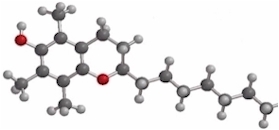|
 |
| Carleton University scientists are trying to create a molecule that slows down aging. |
Chemist Jim Wright is trying to design a molecule he hopes might someday be able to help slow down heart disease, cancer, arthritis and aging.
In November 2000, Wright — a professor at Carleton University in Ottawa — and the five other members of his team received a three-year $413,360 grant from the Natural Sciences and Engineering Research Council (NSERC).
Their goal? To try to create what Wright describes as a
"souped-up version" of Vitamin E and study its effects. The goal is to create a molecule that can combat free radicals — unstable oxygen molecules that wreak havoc by weakening the body's cells.
When cells burn oxygen, they produce oxidants, or free radicals, molecules that lack an electron. These highly volatile molecules
try to steal electrons wherever they can. Free radicals essentially eat away at the body over time, eroding its ability to use energy efficiently. Free radical damage has been linked to cancer, heart disease, diabetes, arthritis, cataracts, fatigue, hardening of the arteries and a number of neurological diseases, including Lou Gehrig's, Parkinson's and Alzheimer's.
Wright hopes to design a molecule with an electron that is bonded weakly enough to tempt free radicals to steal it — but not so weak that even the oxygen in air could set it off.

|
|
|

